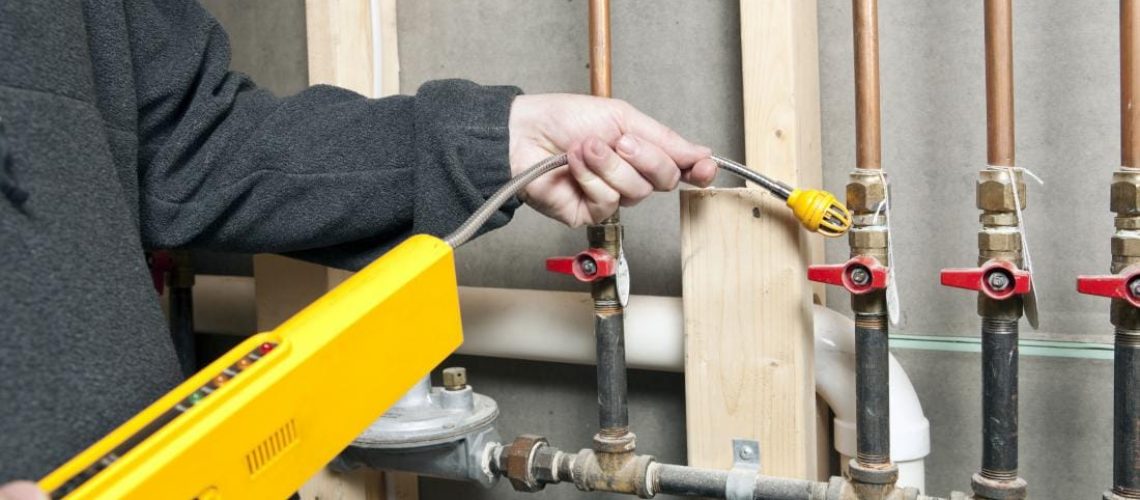Homeownership comes with the responsibility of ensuring a safe living environment for you and your family. Among the potential threats, carbon monoxide and gas leaks stand out as silent, odorless dangers that can have severe consequences if left unchecked. Home inspectors, armed with the tools to detect these hazards, play a crucial role in uncovering issues that could jeopardize the well-being of occupants. In this comprehensive guide, we’ll explore the most common carbon monoxide and gas leak problems that home inspectors frequently discover, emphasizing the critical importance of addressing these issues for a secure and healthy home.
1. Malfunctioning Gas Appliances
Issue: Faulty or Poorly Maintained Gas-Fueled Appliances
Home inspectors often identify issues with gas appliances such as furnaces, water heaters, and stoves. Malfunctioning or poorly maintained gas appliances can emit carbon monoxide or develop gas leaks, posing serious health and safety risks.
Why It Matters:
Malfunctioning gas appliances can release carbon monoxide, a colorless and odorless gas that can be lethal in high concentrations. Regular maintenance, including inspections by qualified professionals, is essential for ensuring the safe operation of gas appliances.
2. Improperly Ventilated Combustion Systems
Issue: Inadequate Ventilation for Combustion Systems
Inadequate ventilation for combustion systems, such as furnaces and water heaters, is a common concern identified by home inspectors. Poor ventilation can lead to the accumulation of carbon monoxide in the home.
Why It Matters:
Insufficient ventilation can result in the buildup of carbon monoxide, which can cause symptoms ranging from headaches and dizziness to more severe health issues. Proper installation and ventilation of combustion systems are crucial for preventing carbon monoxide exposure.
3. Cracked Heat Exchangers
Issue: Cracks in Furnace Heat Exchangers
Home inspectors frequently discover cracks in furnace heat exchangers during their examinations. A cracked heat exchanger can allow carbon monoxide to escape into the home, posing a significant health hazard.
Why It Matters:
Cracked heat exchangers can lead to the release of carbon monoxide, compromising indoor air quality and endangering occupants. Timely inspection and repair or replacement of damaged heat exchangers are crucial for preventing carbon monoxide leaks.
4. Blocked or Damaged Chimneys and Flues
Issue: Chimneys and Flues with Blockages or Damage
Blocked or damaged chimneys and flues can impede the proper venting of combustion byproducts, including carbon monoxide. Home inspectors often identify issues such as blockages, bird nests, or structural damage to chimneys.
Why It Matters:
Blocked or damaged chimneys can lead to the buildup of carbon monoxide and other toxic gases within the home. Regular chimney inspections and maintenance are essential for ensuring proper venting and preventing carbon monoxide leaks.
5. Gas Leaks from Pipes and Connections
Issue: Gas Leaks from Gas Lines, Pipes, or Appliance Connections
Home inspectors may discover gas leaks originating from gas lines, pipes, or connections to appliances. Gas leaks can pose immediate safety risks, as natural gas is highly flammable and poses an explosion hazard.
Why It Matters:
Gas leaks not only increase the risk of fire or explosion but can also lead to health issues and asphyxiation if the gas displaces oxygen in enclosed spaces. Prompt identification and repair of gas leaks by qualified professionals are crucial for preventing accidents.
6. Old or Faulty Gas Line Installations
Issue: Aging or Incorrectly Installed Gas Lines
Old or incorrectly installed gas lines are common issues detected by home inspectors. Over time, gas lines can corrode or become damaged, increasing the risk of leaks.
Why It Matters:
Aging or faulty gas lines can lead to gas leaks, presenting immediate safety hazards. Regular inspections and, if necessary, replacement of old or damaged gas lines are essential for maintaining a safe home environment.
7. Inadequate Carbon Monoxide Detectors
Issue: Absence or Malfunction of Carbon Monoxide Detectors
Home inspectors frequently find homes without carbon monoxide detectors or detectors that are not functioning correctly. Carbon monoxide is odorless, making detectors crucial for early warning of potential leaks.
Why It Matters:
Carbon monoxide is a silent killer, and without detectors, occupants may be unaware of its presence until symptoms occur. Installing and regularly testing carbon monoxide detectors is vital for providing early warning and preventing carbon monoxide-related emergencies.
8. Poorly Ventilated Spaces with Gas Appliances
Issue: Lack of Ventilation in Spaces with Gas Appliances
Spaces with gas appliances, such as kitchens or utility rooms, require proper ventilation to prevent the buildup of gas fumes and carbon monoxide. Home inspectors often identify issues such as inadequate venting or blocked ventilation pathways.
Why It Matters:
Poorly ventilated spaces can lead to the accumulation of gas fumes, increasing the risk of carbon monoxide exposure. Ensuring proper ventilation in areas with gas appliances is crucial for maintaining a safe indoor environment.
9. Improperly Stored Combustible Materials
Issue: Combustible Materials Stored Improperly Near Gas Appliances
Home inspectors may discover situations where combustible materials, such as cleaning supplies or cardboard boxes, are stored too close to gas appliances. Improper storage can increase the risk of fire and gas-related accidents.
Why It Matters:
Combustible materials near gas appliances pose a fire hazard, and in the event of a gas leak or malfunction, the risk of ignition is heightened. Proper storage practices, including maintaining clearances around gas appliances, are essential for minimizing fire risks.
10. Neglected Routine Maintenance
Issue: Lack of Routine Maintenance for Gas Appliances
Neglecting routine maintenance for gas appliances is a common issue identified by home inspectors. Regular maintenance, including cleaning, inspection, and adjustments, is crucial for ensuring the safe and efficient operation of gas appliances.
Why It Matters:
Lack of maintenance can lead to the accumulation of debris, blockages, and potential malfunctions in gas appliances. Scheduling regular professional maintenance is essential for preventing issues and maintaining the safety of gas-fueled systems.
Conclusion
Carbon monoxide and gas leaks are silent threats that can compromise the safety and well-being of a home’s occupants. Home inspectors, with their keen eye for potential hazards, play a critical role in uncovering issues related to gas appliances and ensuring the proper functioning of ventilation systems. From faulty appliances to inadequate detectors and gas leaks, addressing these common concerns is paramount for creating a home environment that is not only comfortable but also safe from the hidden dangers of carbon monoxide and gas leaks. In the realm of homeownership, proactive measures and regular inspections are key to mitigating these risks and ensuring a secure and healthy living space for all.
To learn more about the most common safety issues discovered by home inspectors, check out our article “Safeguarding Homes: Common Safety Issues Uncovered by Home Inspectors“.


